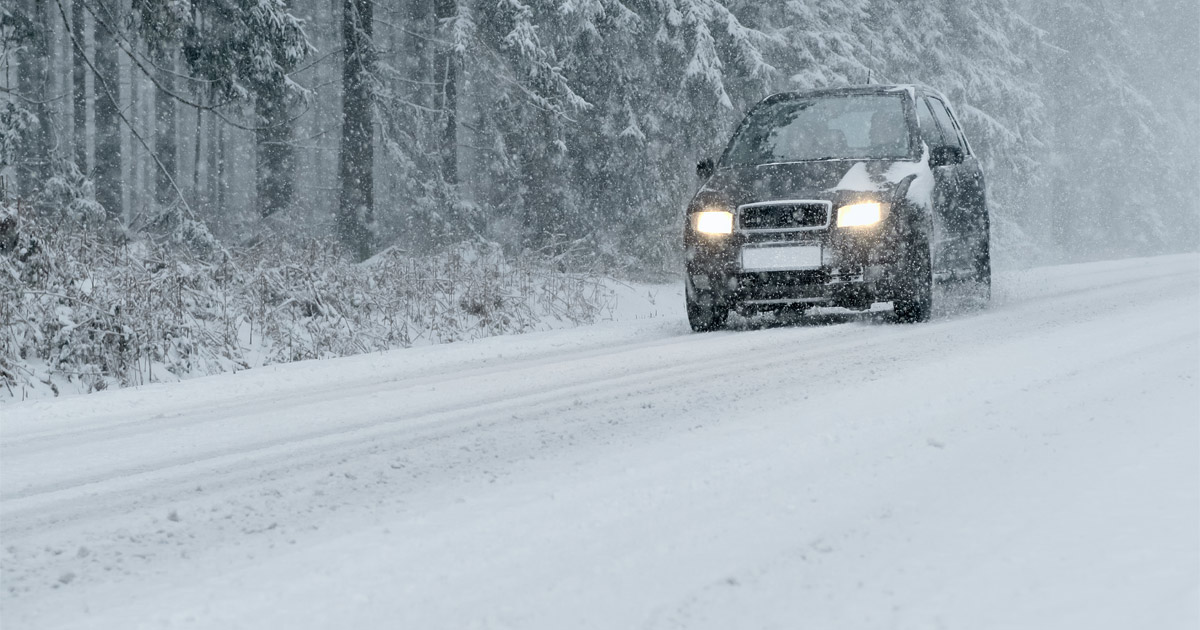How to Drive Safely on Snow and Ice?

Knowing how to drive safely on snow and ice could save your life. The National Highway Traffic Safety Administration reports that in 2020 there were an estimated 25,000 injury crashes and 374 fatal crashes that were caused by winter driving conditions. The number one thing you can do to prevent a crash in bad weather is stay home, but this is not always possible. Read on to review the basics of driving safely when the roads are slick with snow and ice.
Check Your Tires
Staying safe on snowy roads is all about traction. Buy the best tires you can afford, and then maintain them well by rotating them regularly and keeping them inflated to the correct PSI. Tires are where your vehicle makes contact with the road surface. Even the most expensive car with 4WD will still slip and slide if the tires are worn out or inappropriate for the terrain.
Reduce Your Speed
Snow and ice make road surfaces slippery so you will need more time to stop. Leave plenty of following distance to the car in front of you to reduce the risk of a rear end collision.
Give Snowplows a Wide Berth
Be patient and remember that the plow may need to stop often, exit the road, make a wide turn, and may overlap lanes while plowing. Driving too closely to these large vehicles while they are trying to remove snow from the road could cause an accident. Snowplow drivers have poor peripheral vision and are focused on their job. Snow from the plow will fly off and make it difficult to see for passenger vehicles traveling too closely.
Accelerate Slowly
When roads are slick, stepping on the gas pedal the way you usually do could send the car spinning. Go easy when accelerating and use the brake carefully as well, do not brake suddenly. If possible, reduce your speed by downshifting rather than braking. Do not use cruise control settings when navigating snowy, icy, or slushy roads. You need to be able to react quickly to any loss of traction.
Prepare Your Car for Winter Weather
- If you do not take proper steps to maintain your car in winter, you could be liable for any accidents that happen as a result.
- Test your battery to see that it will have enough power to deal with cold temperatures.
- Clear your car of snow and ice before getting behind the wheel – this is required by law in Pennsylvania and many other states.
- Always carry a snow brush and ice scraper in case you get caught in a storm. Your roof, hood, trunk lid, windows, and mirrors should be clear before driving.
- Check your tire treads and air pressure.
- Be sure your wiper blades are in good working order and that your wiper fluid contains antifreeze.
- Clear your headlights and taillights so that you can see the road and others can see you.
Check the Forecast Frequently
Weather can change quickly. In winter never assume that the roads will stay clear. If snow and ice are in the forecast, try to change your travel plans and only drive if it is absolutely necessary. If you must drive, use routes that get plowed or traveled regularly and try not to travel during busy times of day. Always travel with a full tank of gas or a full charge for electric cars.
Watch for Black Ice
Bridges, ramps, and overpasses freeze before roads. Many cars have a temperature gauge that indicates if the road is at a freezing temperature. If you are out driving early in the morning, check to see what the overnight temperature was before you get behind the wheel.
Carry an Emergency Kit
For winter conditions your emergency kit should contain:
- Extra food and water
- Phone chargers
- Blankets
- Jumper cables
- A travel shovel
- Flares
- Sand or kitty litter for traction, should you become stuck in snow or on ice.
What Should I Do If I Get Stranded In An Accident?
Even the best drivers can get into an accident when the roads are full of snow and ice. If this happens to you, stay calm, do not panic, and take the following steps:
- Do not leave your vehicle: In a winter storm you could easily lose sight of your location if you walk away to look for help. Instead try to make sure your vehicle is visible to emergency workers by placing a brightly colored cloth at the top of a rolled-up window as a distress signal.
- Keep your exhaust pipe clear: Do not let snow, slush, or debris build up around the exhaust pipe as lethal carbon monoxide fumes could seep inside the vehicle
- Beware of overexertion when clearing away snow: Rest if you are tired and do not risk musculoskeletal injury or cardiac problems by “working through the discomfort.”
- Conserve energy: Stay warm by layering on clothing, blankets, floor mats, or even paper maps. Run the engine only sporadically to lessen the chill.
Norristown Car Accident Lawyers at Anthony C. Gagliano III, P.C. Advocate for Winter Accident Victims
Drivers have a duty of care to those around them, especially in winter weather when driving conditions may be hazardous. If you have been injured in a winter car accident, talk to the experienced Norristown car accident lawyers at Anthony C. Gagliano III, P.C. Schedule a free initial consultation by calling 267-861-7100 or complete our online contact form. From our offices in Philadelphia and King of Prussia, we represent clients throughout Montgomery County, Delaware County, Bucks County, Chester County, including those in Philadelphia and Norristown.

